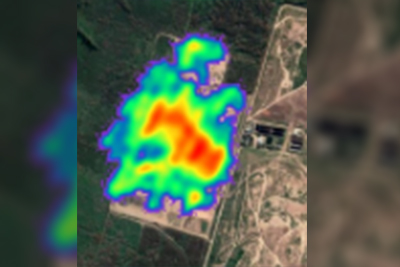Determining Fugitive Emissions of Methane at Landfills
Methane Testing at Landfills – Identifying Fugitive Emissions
Question: Are there significant fugitive emissions from landfills?
Background: Recent studies in the US and Europe have identified landfills as a major source of methane, a potent greenhouse gas. The US EPA required that landfills over a certain size must have methane collection systems. These consist of vertical pipes inserted into the waste and a vacuum system to collect the gas. EPA estimates the efficiency of these systems at 60 to 90 percent, based on computer modeling. Recent empirical studies, however, show the potential for much wider discrepancies. In 2019, a study for the California Air Resources Board, conducted by NASA’s Jet Propulsion Laboratory, found that ten per cent of the 270 landfills tested were responsible for over 40 per cent of the total emissions detected during the survey. Overall, measured emissions exceeded the state’s projected inventory by nearly ten percent.
The IPCC (Intergovernmental Panel on Climate Change*) Methane found that methane has a GWP (Global Warming Potential) of 34 times that of CO2 over a 100-year cycle or 86 times GWP of CO2 based on a 20-year cycle.
Issue: Landfill proponents and operators argue that they recover a lot more methane than they actually do based on theoretical modeling. 100,000s of tons of CO2 equivalents per year could be escaping unaccounted for into the atmosphere from just one landfill. New technology enables accurate realistic measurements: Actual vs theoretical. Awareness about the reliability of the models of GHG emissions of landfills have long been known in Europe and the US. These assumptions have been proven true by a 2019 NASA study of methane emissions in California, identifying landfills as the largest emitters of methane in California. It was originally assumed that the dairy as well as the oil and gas industries are the largest methane emitters. NASA used state of the art measuring equipment and identified that of the largest three sources in California landfills account for more than 40% of methane emissions, the dairy as well as oil and gas industries accounted for only 26%.
Solution: IeRM will conduct testing at a major landfill in Washington State which claims a 95 per cent capture rate for methane. Using state of the art equipment in an airborne platform on several days, we will determine actual emission rates and compare them with those claimed by the landfill. Based on our analysis, we will recommend timely policy changes and corrective actions.
The cost for testing and evaluation are very similar at landfills and if you are concerned with your local landfill please contact us. Cost will be similar.
*) The Intergovernmental Panel on Climate Change (IPCC) is an intergovernmental body of the United Nations, which is dedicated to providing the world with objective, scientific information relevant to understanding the scientific basis of the risk of human induced climate change, its natural, political, and economic impacts and risks, and possible response options
Please consider making a tax-deductible contribution to IeRM to support this important work.

